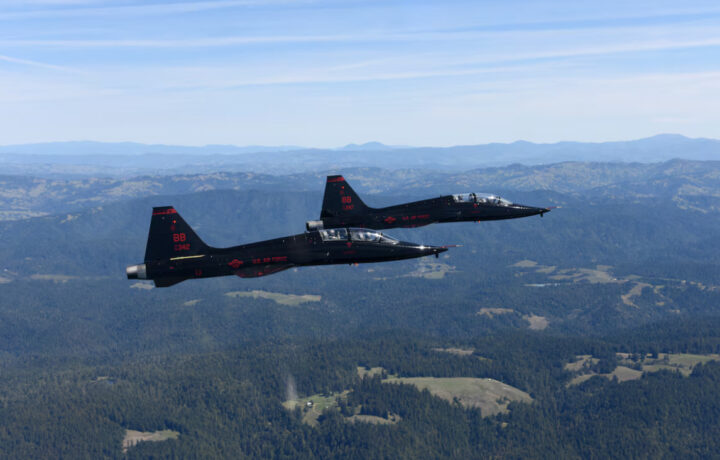The goal of many who go through pilot training in the United States Air Force is to get into the cockpit of a fighter like the F-15EX Eagle II, F-16 Fighting Falcon, F-22 Raptor, or F-35 Lightning II. Others may want to fly the bombers, including the B-52 Stratofortress, B-1B Lancer, and B-2 Spirit – with the hope that perhaps they’ll be selected to fly the future B-21 Raider.
However, fewer aviators will get behind the controls of fighters or bombers, as the air service continues to grapple with a pilot shortage. It would seem to be an oxymoron, a shortage of pilots would mean those completing training would have more opportunities, but that’s not the case.
Military.com reported that a new Air Force policy could require recent T-38 Talon pilot training graduates to fly aircraft other than fighters or bombers.
The Air Force confirmed that it is currently 1,848 pilots short, and the service unveiled a “significant but necessary policy change,” outlined in a leaked but verified memo. Under the change, graduates of the T-39 training won’t have to wait for up to a year for openings in their chosen units and instead will go to work on mobility and refueling aircraft.
“While we would prefer to send every qualified T-38 graduate to a fighter [Formal Training Unit], circumstances dictate that we utilize available capacity to maximize pilot production,” the memo stated. “In the near term, in addition to traditional fighter/bomber assignments, T-38 graduates will be matched to additional T-6 First Assignment Instructor Pilot assignments and opted for non-fighter/bomber aircraft.”
It added that “T-38 students will include and prioritize all aircraft (not just fighter/bomber) on their dream sheets to ensure we can accommodate preferences.”
The Air Force’s pilot shortage has ranged from 1,500 to 2,000 aviators and, at the end of the fiscal year last September, it was short by around 120 pilots.
Retention Bonuses on the Rise
The Air Force has struggled in recent years to retain aviators, and last December the Air Force announced it would offer bonuses in excess of a half million dollars. The new retention incentives would pay pilots between $15,000 to $50,000 per year to commit to three- to 12-year contracts – up to $600,000 in total.
Payments would depend on the type of aircraft a pilot flies and the number of years that the aviator commits to continuing military service. It is being offered to manned aircraft pilots and drone pilots, as well as system operators and air battle managers.
There has also been criticism of the bonuses, with a case being made that the Air Force is simply throwing money at the problem rather than resolving it. This could include providing more opportunities for airmen to fly and instituting changes like adding warrant officers.
Based on Needs
The Air Force has long maintained a policy that gives aircraft assignments based on need, but the recent change is meant to ensure that trained aviators will actually be in the cockpit of an aircraft and not waiting for an assignment.
“The aircraft assignment policy change is helping manage breaks in training by matching available pilots to aircraft with training capacity,” Brigadier General Travolis Simmons told Military.com. “This policy shift optimizes use of our available resources and results in mission-ready pilots who are prepared to contribute sooner.”
However, should the pilot shortage be addressed, those aviators who have passed the T-38 Talon training can volunteer in the future to transfer to other aircraft, including fighters and bombers.
“We will continue to fill all available fighter Formal Training Unit seats,” Simmons said. “As Fighter Formal Training Unit capacity improves and Air Force needs dictate, pilots affected by this policy change will have the option to voluntarily crossflow to fighter/bomber aircraft.”
The T-38 Talon is a twin-engine, high-altitude, supersonic jet trainer. It is used in numerous roles due to its design, economy of operations, ease of maintenance, high performance, and exceptional safety record. The Air Education and Training Command primarily employs it for joint special undergraduate pilot training.




